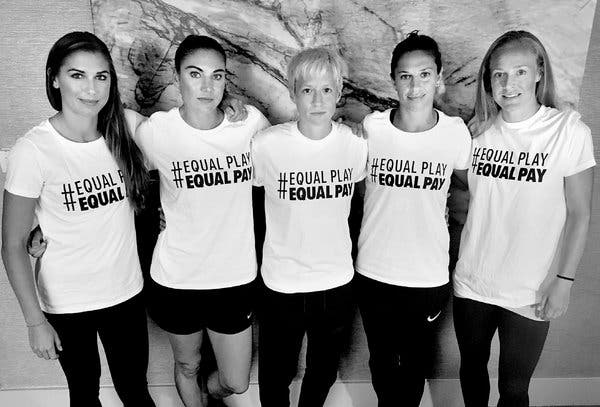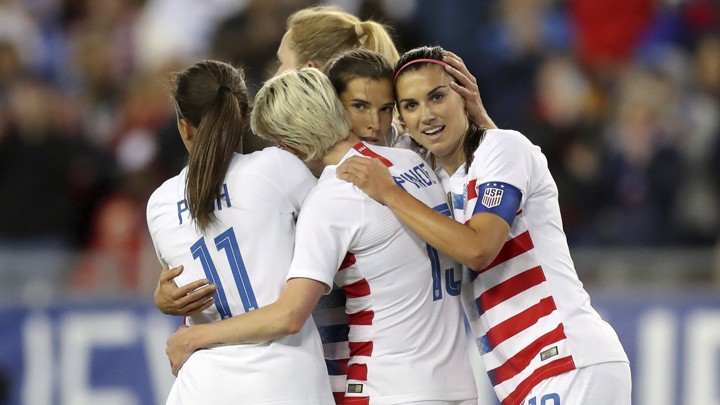Under the U.S soccer team’s new collective bargaining agreement, the members of the women’s team are paid a guaranteed salary of $100,000 per player. This salary is the same, whether they win or lose, play or don’t play. In contrast, their male counterparts are paid $5,000 per game played, whether they win or lose. However, they must play. If they don’t play, they don’t get paid. For example, if both teams lost every game in a season (there are twenty games), and every male player played every game (this is not required for the females), the players would make identical amounts-$100,000 a season. In contrast to the women, the men are eligible for bonuses paid based on how many games they played, and how many games they won. Overall, this leads to a pay discrepancy of about 11% in favor of the men. However, the greater the risk, the greater the reward. In essence, the women have traded the opportunity to make 11% more, for the guarantee of being paid $100,000. Is this such a bad trade-off?
Another aspect of the pay discrepancy between male and female players is caused by the prize money awarded by FIFA (Fédération Internationale de Football Association) for a team winning the World Cup. For the 2018 Men’s World Cup, FIFA awarded $400 million in prize money to the winner, compared to the Women’s World Cup, where FIFA awarded $30 million in prize money to the winner. Why is the difference so incredibly vast? At this point in time, there are more men’s leagues paying into FIFA, than women’s leagues. As a result, the prize money available is subsequently unbalanced between the genders.

Another part of the pay discrepancy exists because of how the games are watched. YouTube broadcasts the National Women’s Soccer League, while the major TV networks broadcast men’s Major League Soccer in a multi-year, multi-million dollar agreement. This difference is subsequently reflected in the bonuses paid to the players.
The bottom line is, U.S. women make less than U.S. men in competitive soccer, because:
- Women make a guaranteed salary, where men are only paid via bonuses.
- FIFA has greater prize money for the men’s World Cup than the Women’s World Cup, based on money that funnels into them from soccer clubs around the world. At this time, there are more male soccer clubs than female soccer clubs paying into FIFA.
- Multi-million dollar contracts on a broadcast TV present the opportunity for greater male player bonuses. Similar national broadcast agreements have not been negotiated for the women’s team.

Regardless of the success of the women’s team, the female players will not be eligible for more money unless they waive their guaranteed salaries, and begin being paid via bonuses like their male counterparts. Additionally, more women’s teams around the world need to become paying members of FIFA, at least approaching the level of memberships experienced by male teams. Furthermore, the business people promoting the women’s games must negotiate similar agreements to the men’s teams with broadcast television. Until these factors are changed, the pay gap will most certainly continue and even possibly worsen. Any criticism of the situation that is not focused on these key issues is merely displaying lip-service, and not actually focused on viable solutions.


